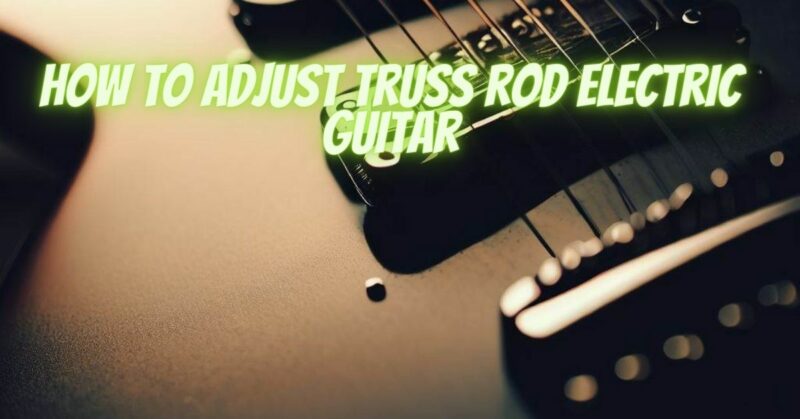The truss rod is a vital component of an electric guitar’s neck, allowing for adjustments to the neck’s relief and overall playability. Correctly adjusting the truss rod can help maintain optimal neck curvature and ensure a comfortable playing experience. In this article, we will guide you through the process of adjusting the truss rod on an electric guitar, helping you achieve the desired relief and playability.
Note: Truss rod adjustments require caution and precision. If you are unsure or uncomfortable with making these adjustments, it is recommended to seek the assistance of a professional guitar technician.
- Assess Your Guitar’s Neck Relief: Before making any adjustments, evaluate the current neck relief of your electric guitar. Neck relief refers to the amount of bow or curvature in the neck. Place a capo on the first fret and use your other hand to press down the string at the highest fret (usually around the 17th). Observe the gap between the bottom of the string and the top of the 7th or 8th fret.
- If the gap is too large or the string touches the frets, the neck has excessive relief, requiring a truss rod adjustment to reduce the bow.
- If the gap is very small or the string does not clear the frets, the neck has insufficient relief, and a truss rod adjustment is needed to increase the bow.
- Locate the Truss Rod Adjustment Point: On most electric guitars, the truss rod adjustment point is located at the headstock, typically concealed under a truss rod cover. Look for a small access hole or a cover that can be removed using a screwdriver or Allen wrench.
- Select the Appropriate Truss Rod Tool: Electric guitars usually require a specific tool for adjusting the truss rod. The tool type can vary depending on the guitar’s manufacturer and model. Common tools include Allen wrenches (hex keys) and specialized truss rod wrenches. Consult your guitar’s manufacturer or model-specific instructions to determine the correct tool size and type.
- Make Incremental Adjustments: Insert the appropriate truss rod tool into the adjustment point and carefully turn it in the appropriate direction. Remember, small adjustments are crucial to prevent damage to the neck. For most electric guitars:
- To increase neck relief (reduce bow): Turn the truss rod tool clockwise (right) in small increments (e.g., 1/8th of a turn).
- To decrease neck relief (increase bow): Turn the truss rod tool counterclockwise (left) in small increments.
- Evaluate the Results: After each adjustment, allow the guitar’s neck to settle for a while, typically overnight. Recheck the neck relief by repeating the process described in Step 1. Assess the playability and feel of the guitar. If necessary, make additional small adjustments until the desired neck relief is achieved.
- Seek Professional Assistance if Needed: If you encounter difficulties or lack confidence in making truss rod adjustments, it is wise to consult a professional guitar technician. They possess the expertise and tools required to make precise adjustments while minimizing the risk of damage.
Conclusion:
Adjusting the truss rod on an electric guitar is an essential skill for maintaining optimal neck relief and playability. By carefully following the steps outlined above and making small, incremental adjustments, you can achieve the desired bow in the guitar’s neck. Always monitor the effects of each adjustment, allowing the neck to settle between adjustments. If you are unsure or uncomfortable with making truss rod adjustments, it is recommended to seek the assistance of a professional guitar technician. With proper truss rod adjustments, you can ensure a comfortable playing experience and optimize the performance of your electric guitar.


